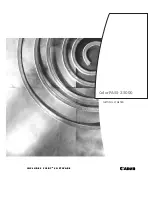
Introducing the PowerVault 35F: Dell PowerVault 35F User's Guide
file:///C|/Users/rishi_sood/Desktop/35F/ug/intro.htm[3/21/2013 11:16:17 AM]
Operating as Both a SCSI and Fibre Channel Device
The bridge is both a SCSI and Fibre Channel device operating on a SCSI bus and Fibre Channel network
simultaneously.
The SCSI Side
On a SCSI bus, the PowerVault 35F acts as a SCSI initiator passing requests from hosts on the Fibre Channel network
to target devices on the SCSI bus. Each PowerVault 35F SCSI bus uses a single SCSI ID. The default ID is 7 and can
be changed when configuring the PowerVault 35F.
The Fibre Channel Side
In a Fibre Channel loop, the PowerVault 35F is identified by a single Arbitrated Loop Physical Address (AL_PA) or a
fabric assigned Source ID. Once the address is acquired, any host on the Fibre Channel loop can access the devices on
a SCSI bus transparently over a Fibre Channel connection.
Mapping Devices
To allow Fibre Channel and SCSI devices to address each other, the PowerVault 35F creates a table that maps device
identifiers between Fibre Channel and SCSI. During PowerVault 35F configuration, you can choose the mapping
method and, in certain cases, customize the device mappings. See
Understanding the PowerVault 35F Configuration
for more information about address modes and their configurations.
Processing SCSI Information
The following describes how the bridge processes SCSI information:
1. A Fibre Channel host issues a command. The Fibre Channel host encapsulates the command in the Fibre
ChannelP protocol and sends the packet to the PowerVault 35F.
2. The Fibre Channel port in the PowerVault 35F receives the packet, interprets the Fibre Channel information, and
places the packet in buffer memory.
3. The PowerVault 35F’s processor interprets the information and programs a SCSI controller to process the
transaction.
4. The SCSI controller sends the command to the SCSI device (target).
Figure 4. Information processing











































